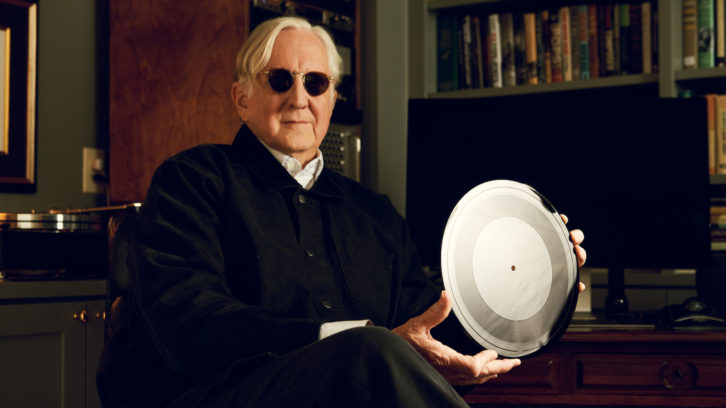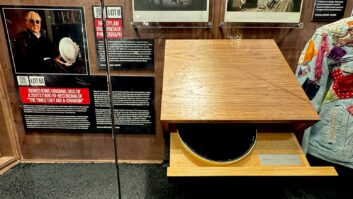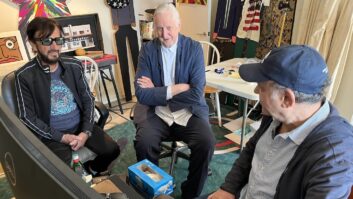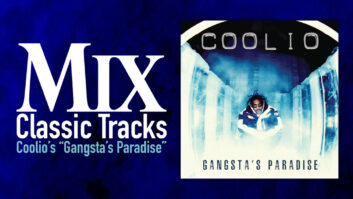
 This was Mix’s 4th most-read article of 2022!
This was Mix’s 4th most-read article of 2022!
New York, NY (May 20, 2022)—It’s no secret that the Vinyl Revival has been one of the most exciting music business stories of recent years. The format’s return from the dead has been the latest unexpected turn yet for an analog technology first pioneered in late 1800s—one that essentially hasn’t been updated since the 1980s, when the world cast it aside in favor of digital audio. Now, 40 years later, Oscar and Grammy-winning producer T Bone Burnett wants to make up for that lost time with his newly announced Ionic Original discs. The format, he says, offers the greatest fidelity and durability ever available on an analog record—and it does so by adapting acetate discs to the 21st century.
“Artists have always lamented that the vinyl copies of their records don’t sound as good as the acetates,” says Burnett. “I’ve heard that hundreds of times.” Having produced the likes of Bob Dylan, Elvis Costello, Robert Plant, Alison Krauss, Elton John, Gregg Allman, Leon Russell, Roy Orbison and more, he’s heard it from artists with some authority behind their complaints.
The problem is, few people ever get to hear an acetate disc, and even if they do, it doesn’t sound pristine for long. An acetate disc is used in the first steps of producing a vinyl record, and despite the name, doesn’t actually involve acetate; rather, it’s an aluminum disc with nitrocellulose lacquer painted on it. The disc gets put on a cutting lathe that etches a physical representation of an audio signal into the lacquer—it literally cuts a groove. The resulting acetate disc then gets used as a mold for electroplated metal copies that, after a few more processes, result in the grooved metal stampers that record presses use to crush blobs of hot vinyl into records. Those records may sound great, but since the acetate disc is a direct copy of the original audio signal, it sounds even better.
Unfortunately, nitrocellulose lacquer is perfect for cutting, but it’s not built to last. Acetate discs degrade quickly, with friction between a record needle and soft lacquer literally melting the groove a little more every time a disc gets played. Further, the lacquer can’t be touched by bare hands, as oils from skin catalyze with the nitrocellulose to create crusty palmitic acid deposits in the grooves. So while acetate discs serve a crucial function in record production and briefly sound great, they’re doomed from the instant they’re cut.
After honing in on acetate discs as “the best sounding medium of all,” Burnett and his partners formed NeoFidelity in 2014 to explore ways to reinvent the format. The solution—developed with Georgia Tech and eventually dubbed Ionic Original—is to cover that soft nitrocellulose lacquer under a durable, imperceptible coating that has a composition similar to quartz and emerald.
“We looked into methods used to protect parts of the space station that are exposed to the direct heat of the sun, and we looked into the process that makes damage-resistant glass for mobile phones—Gorilla Glass,” says Burnett. “Using those two types of ionic deposition, we were able to create acetates which maintain their pristine sound over thousands of plays. The coating is something like 90 atoms thick and greatly reduces friction; we’ve got discs that we’ve played 2,000 times that are dead quiet.”
As might be expected, the Ionic Original process is not cheap, and while it is scalable to a mass-market level of production, that will require considerable investment. For now, to gain both attention and funding for the company, NeoFidelity plans to create one-off recordings of notable artists, have them cut to disc by Jeff Powell of Take Out Vinyl (Daft Punk, The Black Keys, Al Green), and then sell them in a method yet to be determined. “We’ve had interest from people about private sales, interest from auction houses and we are close to making a decision of how we’re going to release the first one,” said Burnett. “Pricing will change. How do you put a price on this? I have no idea, but over time, we’ll be able to figure that out.”
Of course, that business model will, for now, make NeoFidelity discs as rare as actual acetates—items attainable only by well-heeled collectors and, despite their durability, likely not played at all since they’ll be investments for those who can afford them. “We are creating scarcity in the beginning,” Burnett readily admits. “[Say] this is a beautiful Bob Dylan recording—all of the Bob Dylan fans won’t be able to hear it, but there are thousands of other Bob Dylan recordings they can hear for free. We’re just adding to the canon; we’re not subtracting anything, we’re adding, and in time, it will all work out…. Eventually, I’m sure this music will filter out into the broader culture, but at the moment, we’re just working in this one specific area.”
T Bone Moves Into The Village
The other benefit of a one-of-one model, says Burnett, is that it fights back against the devaluation of music in recent times: “I want to test the market to see what the actual value of a piece of recorded music is. We’ve been told by the government, we’ve been told by record companies, we’ve been told by streaming companies what our music is worth. I think the music that we make in this country is the most valuable thing we produce. Music is to the United States as wine is to France—and what has happened with the quality of recorded music over the last two decades, is the equivalent of aphids taking over the vineyards in France and destroying them, [so Ionic Original] is not some game that the record business is playing with the general public; this is artists standing up for themselves.”
That said, given the production costs, Ionic Original discs will by necessity have to feature fairly high-profile artists at first, but Burnett feels that as the technology catches on, production costs will drop to a point where limited-edition runs will become feasible for artists that don’t have Dylan-sized fan bases. There’s other potential applications, too, such as theoretical multimedia digital/analog hybrid discs: “We can put colors in the coating, and in those colors, you can store digital information—a CD, DVD, Blu Ray, holograms, metadata, album covers, interviews, anything you want.”
While that futuristic vision would require a rather specialized player, a regular Ionic Original disc is playable on any turntable, and with that mind, the technology might simply be used to safeguard crucial media from the past, helping archives coat existing fragile acetates and vinyl records to help preserve them. “It may become just an archival technology; I have no idea where this is going to end up,” says Burnett. “That’s several stages down the road. At the moment, we’ve just been focused on getting this one-of-one to the point of being real.
With that in mind, a major Ionic Original announcement from NeoFidelity is expected next week.







